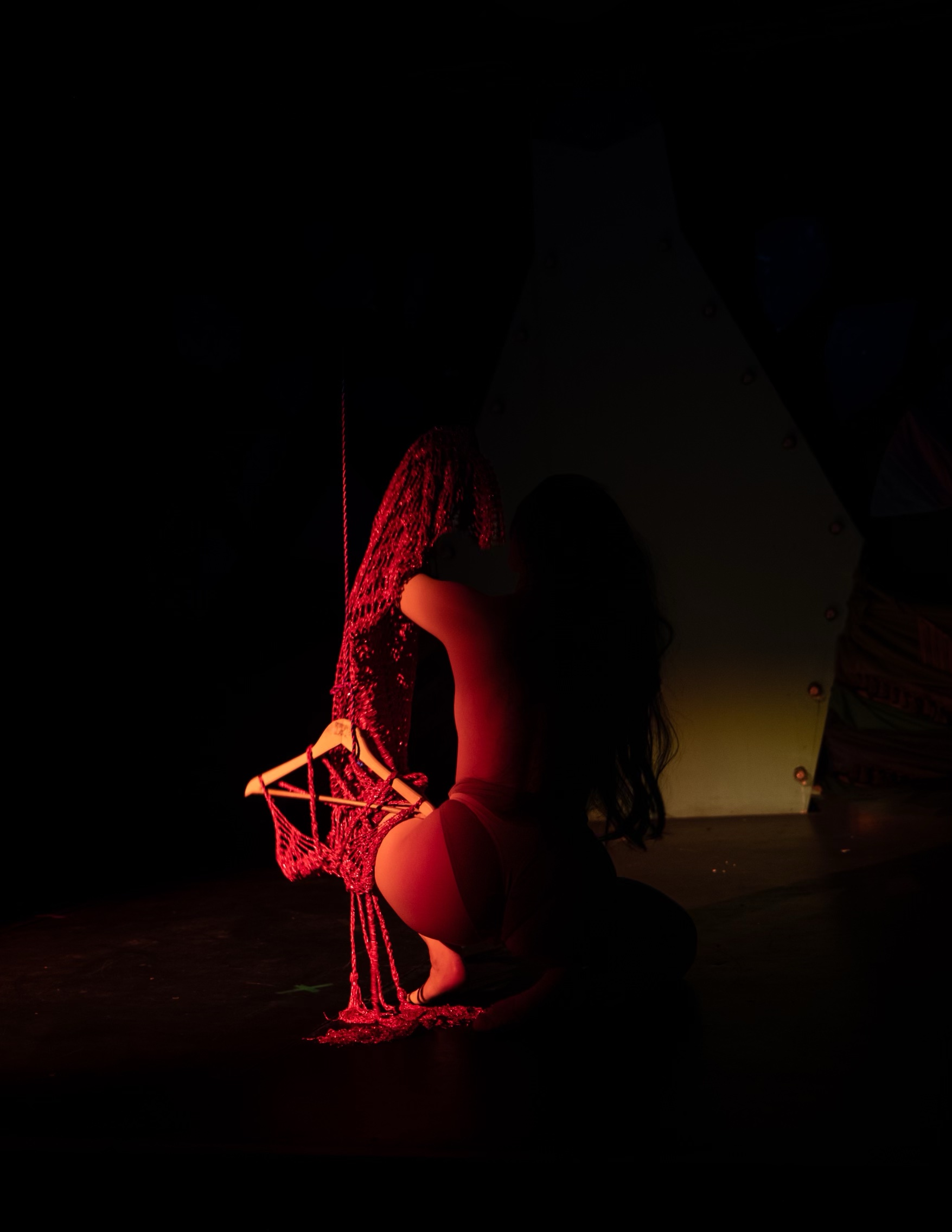Words by Francesca Matthys.
I was privileged to witness For You: Wicked by Fimbo Butures again, but this time, a developed version, one year later in a different space in London, part of the VAULT Festival. It is a gift to watch a work grow and shift… Become so clear in its intention and message that you have no other choice but to sit up and fully experience their stories.
The work is a direct criticism on the way that queer bodies of colour are commodified, poked and prodded in work; sex and art. It opens in a similar way to its previous rendition, with performer Lizzy Tan seated in the centre of the stage. Her body bare and hair cascading like a beautiful waterfall concealing her nude body. Performer Maya Williams sat in the audience calling out different times, indicating to Tan how long they had been moving for. Almost ensuring that this body was only seen for a limited amount of time. That it was only privileged enough to receive a limited amount of airtime. This meticulous observance of time was so clinical and formal as Tan moved intentionally and slow. Distinct movement language, contorting, distorting and retorting through her form.
Before long, a red dress was revealed from the ceiling, lowered by Maya who was wearing a men’s style pinstripe coat. The two looked like a pair out of the 1920s with Lizzy now beginning to adorn themselves with the almost crochet bondage dress. I wondered if it was a reflection on how the femme presenting body is forced to adorn itself to be palatable to society. Clad in red, a colour synonymous with sensuality and seduction but also rich cultural meaning across the world. East Asia; where it speaks to celebration and repelling evil, and South East Asia where it symbolises strength and bravery. Key parts of a journey to full liberation in any sphere. The intricate layered and bound motif however also alluding to the very insidious nature of how female presenting bodies, queer and bodies of colour are still kept and bound according to the eyes and dictation of patriarchy. A nod to the 1920s, however challenging this archaic reality, today.
As the performers both very purposefully put on a pair of long vintage gloves, the juxtaposition of bare bodies and concealed arms and hands made me think of how gloves became popular in the 18th century as a way to maintain modesty. And their movement language at this point was specific to the turn of the 20th century, as their bodies gracefully moved in unison like a pair of synchronised swimmers. Very presentational. Like a dance. Like the exact dance that we as the audience had come to see right? Delicate hands piercing through the air; allowing us to forget about the sensuality of the hands in their naked form. Eyes too penetrating in the distance as if this moment is merely routine and something that just must be done. The dance of existing in a body of colour but more so that of a queer body of colour, strenuous, careful, exhausting.
It was then when the action on stage abruptly paused and the performers broke the fourth wall. Many performances do that these days but it was the very direct nature of this section that really fascinated and excited me for where this work has journeyed to. We as the audience were handed laminated QR codes to the performer’s PayPal account and encouraged, cohered into donating to either a drink, an empty seat or even to be ‘king of the house’ a term that Maya explained originates from camming. The highest bidder. Though exciting, the nature of showing independent work often means that there is often a great loss made rather than a profit and this was a way to help as the performers auctioned their time and bodies. I admire the performers’ very adaptable way of engaging with the audience at this point. Their ability to sense into the room, the awkwardness, fear or even just shyness that was contained within the underground space that buzzed with the sound of life above us.
The continuous swapping and changing of clothing items and shoes, from one performer to another too stayed with me. The accessories of work. Solidarity.
Though hard-hitting and poignant, a satirical container in which contemporary dance is used to process harsh realities, the sensitivity of this work is revealed in many ways through asking for consent before touching audience members and reassuring us that we are safe in their presence. This very special quality is extended into the final ritual of the show. The hissing like sound of a kettle lingered in my mind as the performers were quiet in the space, cleansing through water and smoke, burning money. Burning what binds them, burning the expectations, the pain. Conjuring the ancestors, leaving this offering of work to them. And reminding us all that the work of the body in all forms is sacred.
Image credit: Billy Nisbett.
